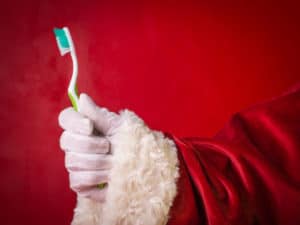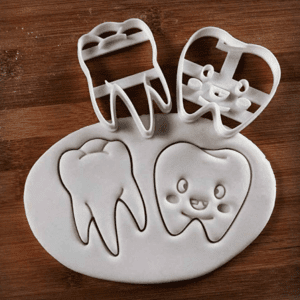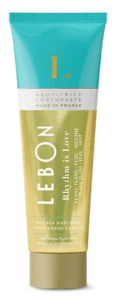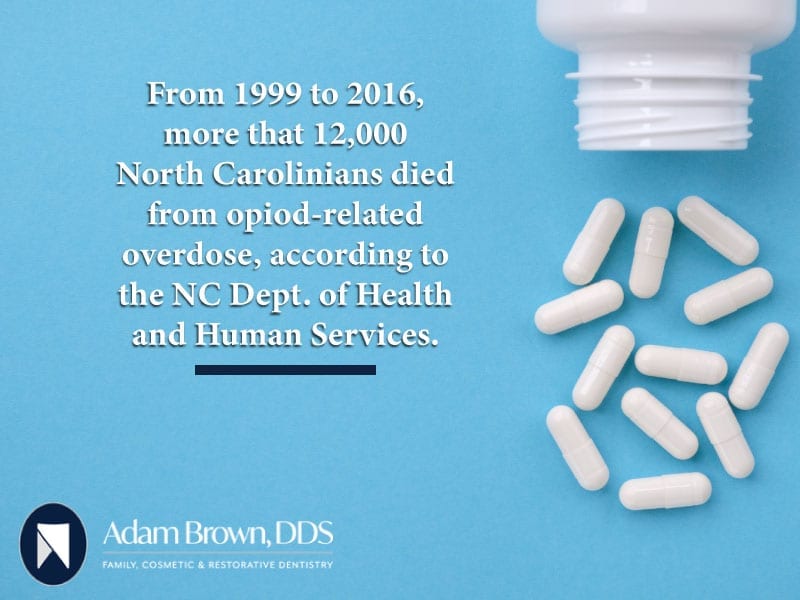Gifts to Make Them Smile | Holiday Gift Guide
 Perhaps when you were younger, Santa stuffed your Christmas stocking full of chocolate coins and peppermint twists — and a new toothbrush to remind you not to let all that candy rot your teeth. Santa’s always been a smart guy.
Perhaps when you were younger, Santa stuffed your Christmas stocking full of chocolate coins and peppermint twists — and a new toothbrush to remind you not to let all that candy rot your teeth. Santa’s always been a smart guy.
Whether Dasher, and Dancer, and Donner and friends will deliver dental care to your door this holiday season, Carolina’s Dental Choice wants to help you give the gift of dental health this year. We’ve put together a list that includes something for everyone.
PRESENTS WITH A PURPOSE
Do you have a co-worker that likes to travel or travels a lot for work? Consider travel-sized toothbrushes, toothpaste, dental floss and other small packables (like shampoos) and put them together in an attractive travel bag. Tuck in a small first-aid kit, sewing kit, shower cap, earplugs and other travel must-haves or comfort items. Travel items are also great for anyone planning a get-away. Combine the above items with a travel journal, pen, or guide book.
Got a college kid? Put together a semester’s worth of dental supplies including a toothbrush in their favorite or school colors, toothpaste, floss, mouthwash, sugar-free gum, breath mints, single use travel brushes for those late nights in the library in a reusable tote.
And if you’ve got a sports fan, use the same idea but customize it for the team. You can find a Carolina Panthers toothbrush and partner it with a black, blue and silver toothbrush holder or rinse cup. Or consider a Charlotte Hornets toothbrush with a purple or teal hand towel.
Kids can benefit from the same kind of package featuring their favorite characters like Spider-Man, Hello Kitty, Star Wars, and The Secret Life of Pets.
Dental insurance for a year would make a wonderful gift for someone who might need an extra hand with expenses in the short-term, a student, or someone waiting for benefits with a new employer. Many options can be found online with different levels of coverage, so check carefully before signing up. In North Carolina, options include: Blue Cross Blue Shield NC, Aflac, Humana, and United Health Care. Low-income children in North Carolina who do not qualify for Medicaid may be able to obtain health and dental insurance through the North Carolina Health Choice Health Insurance Program for Children.
MAKE IT HOMEMADE
Do you have a small child on your list who has not yet lost their first tooth? Sew up a customized Tooth Fairy Pillow with a little pocket in it for the tooth (and later the money)!
 Not crafty? No worries! The artists of Etsy have you covered. There is a wide selection of dental-themed gifts available, sure to initiate grins from lots on your list like personalized tooth ornaments, tooth-shaped earrings and charms, tooth-shaped soap, wall art, and even a Tooth Fairy wand (should she need a hand during busy season). Meanwhile, Shutterfly can help you put together a customized mug or calendar or mousepad featuring photos of all your family members’ smiles.
Not crafty? No worries! The artists of Etsy have you covered. There is a wide selection of dental-themed gifts available, sure to initiate grins from lots on your list like personalized tooth ornaments, tooth-shaped earrings and charms, tooth-shaped soap, wall art, and even a Tooth Fairy wand (should she need a hand during busy season). Meanwhile, Shutterfly can help you put together a customized mug or calendar or mousepad featuring photos of all your family members’ smiles.
If you’re a baker, there are tooth-shaped cookie cutters perfect for whipping up a batch of cookies for your dental office or dental student.
BE PRESENT
So many times we focus on giving things, but things may not be what a person actually needs. Instead hands-on help would be most appreciated! Whether that person is elderly, has mobility issues, or is a new parent, consider being present as a present.
Make a “gift card” for a homemade dinner once a month throughout the year. Whether you invite the recipient over — which also provides social support — or take a casserole over to their house, you’re giving more than just food.
Offer to drive. Making it to appointments can be a hassle without transportation. Talk about coordinating so that you can give your lunch hour to help someone get to the doctor, dentist, or even just run errands.
Lend a hand. Little things like taking out the trash each week, raking leaves, mopping the floor, or walking the dog are great ways to help someone mark a chore off the list. Maybe you have a skill that could be useful like repairing a porch railing, painting the bathroom, or organizing, but always make the effort to learn what kind of help a person needs.
EXPLORE DENTAL HISTORY
Books are a great gift and there are many available with a take on teeth. For the beginning reader, “I Lost My Tooth” by Mo Willems features an ensemble cast of squirrels and “The Tooth Fairy” with Peppa Pig both help explain the process of losing and regrowing teeth. Adult readers with an interest in non-fiction will find the “The Mystery of the Exploding Teeth: And Other Curiosities from the History of Medicine” by Thomas Morris a fascinating jaunt through the things we’ve done to the human body in what’s described as a “wryly humorous collection of stories about bizarre medical treatments and cases offers a unique portrait of a bygone era in all its jaw-dropping weirdness.” And keeping with the science theme, “Evolution’s Bite: A Story of Teeth, Diet, and Human Origins” by paleoanthropologist Peter Ungar studies human evolution and climate change through the records stored in fossilized teeth.
Surprise your family with a vacation to Baltimore, Maryland! The world’s first dental school was founded there in 1840 by Horace Hayden and Chapin Harris. The Baltimore College of Dental Surgery (which later merged with the University of Maryland) taught generations of dentists. You can visit the National Museum of Dentistry located on the campus and explore dozens of exhibits featuring some of the objects from their 40,000-piece collection.
Vintage dental tools can make for a wonderful (if not quite unusual) conversation starter. Forceps, pelicans and toothkeys were commonplace in by-gone dental offices and some were made by blacksmiths. Many pelicans, aptly named for their shape, are made of silver and have hallmarks from a variety of countries, including England and France. Old dental chairs and equipment can be found at local antique shops and online as well as old dental advertising for products or services. In the early days, the local barber doubled as the neighborhood dentist!
DESIGNER GIFTS FOR DESIGNER SMILES
Rhythm is Love (Ylang Ylang + Mint) Organic Toothpaste, made in France, is a collaboration between dental and artistic professionals. Uniquely flavored with ylang ylang, yuzu, and mint, the toothpaaste is sure to add a flavor and flair to anyone’s brushing routine.
Twice Early Bird and Twilight Toothpaste is a morning and night duo lights. The Early Bird formula is wintergreen and peppermint, and the Twilight blend combines lavender and mint for a relaxing finish to a long day.
The Burst Sonic Toothbrush is a powerful electric toothbrush with charcoal bristles that sonically vibrate 66,000 times in two minutes to get teeth super clean. It also features a quadpacer that will gently buzz every 30 seconds to ensure that every area of the mouth gets equal attention.
Minimalist, metallic and cool, the electric toothbrushes from Quip were one of the first approved by the American Dental Association. Compact and lightweight, the design looks and works great. Quip brushes suction cup to surfaces like mirrors or counter tops and are shower safe!
Cocofloss bills itself as freshening, whitening, and soothing this colorful alternative to traditional floss adds a colorful and fun twist to the flossing routine. The 9-piece Floss Fanatic Set is available in a variety of flavors including coco, vanilla, mint, strawberry, and orange.
An electronic UV toothbrush sanitizer from Pursonic protects your toothbrush from germs and bacteria floating around and uses ozone and photo catalyst technology to kill germs and bacteria left behind.
Steripod makes an easy to use toothbrush protector great for home or travel as well as a razor protector and tongue scraper. The protective pods are designed to prevent cross-contamination like beard whiskers in toothbrush bristles.
Dental care can be part of a luxurious self care routine with a whitening treatment followed by a massage, manicure, and facial. Carolinas Dental Choice offers Opalescence whitening products to brighten your smile!
SOMETHING SWEET
Giving something sweet to eat seems like a holiday tradition. If you’re shopping for someone with braces or orthodontic work, avoid these foods in order to protect their teeth: popcorn, nuts, hard candy, caramel, pretzels, and peanut brittle. Foods that are good for teeth are whole grains, fruits, lean meats, and vegetables. Sugar-free gum and candies are great options. And get creative when putting together a basket of goodies. Don’t forget treats for all family members! Pick up some dental chews for Fido or tartar cleaning snacks for Fluffy too.
If you’re looking for another way to recognize a caregiver such as a dental professional or nurse, think about things that will help them care for themselves. Massages, pedicures, manicures, a trip to the salt cave, compression socks, aromatherapy treatments, and meal delivery kits are great ways to support those whose job is to focus on others.
GIFT BY GIVING
For the person who has everything, consider making a donation to a dental organization such as Operation Smile, Dental Lifeline, the American Dental Association initiative Give Kids a Smile, or America’s Dentists Care Foundation’s Missions of Mercy. Helping others guarantees a smile. You can also ask your dental practice how they are involved with the community and support their individual efforts.
Everyone at Carolinas Dental Choice wishes you and yours a wonderful holiday season and a happy new year. Are your regular cleanings scheduled for 2019?

Did you know?
Reindeer only have front teeth on their bottom jaws! Reindeer have what’s called a dental plate or pad, which is a somewhat like an extra strong gum. Their premolar and molar teeth are made for grinding grass, hay, moss and lichen, and are very similar to those of other grass-eating animals such as cows and horses. Reindeer have 34 teeth total, compared to 32 teeth in people.

